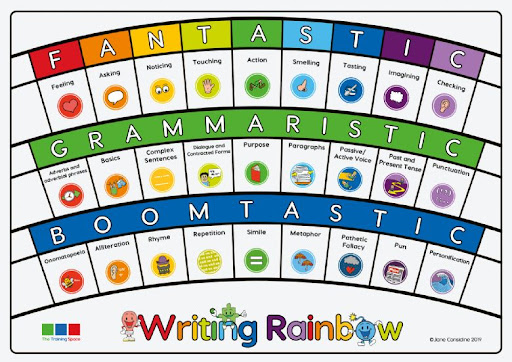English
Our Approach to Reading
At Greenways Primary Academy, we believe that reading is at the heart of learning: to provide children with skills for their futures; to equip them for further education; to enable children to become life-long learners; to support with writing; to foster a creative mind, which is vivid with imagination; and to develop knowledge across the curriculum. In short, we intend that our children will be independent, reflective and life-long readers, who can read fluently and for meaning, and are prepared for anything their futures may hold.
As children’s reading develops at different rates, teaching and learning is tailored to each child and their ability. Children will read daily in the classroom, either through shared reading, one to one reading or in reading lessons. Children are encouraged to read a range of books in school and at home.
In EYFS and KS1, the teaching of systematic synthetic phonics encourages children to link sounds and letters and begin to read and write. Children are expected and encouraged to apply their phonics skills in all areas of the curriculum. Phonics planning must allow children to gain a progressively deeper understanding of the phonetic structure of the English language as they move through the academy to ensure all children are provided with the key tools needed to become a fluent reader.
In Key Stage 2, reading lessons focus on specific reading skills (known as ‘VIPERS’), to ensure that children are exposed to high-quality authors and texts. Accelerated Reader helps teachers to track students’ independent practice and progress with reading, and is used from year 2 through to year 6.
‘Stokes 100 Reads’ are promoted within the academy to enjoy, and encourage children to read a wide variety of books. Reading and vocabulary is developed across the curriculum using vocabulary builders (inspired by Alex Quigley’s: Closing the Vocabulary Gap) to support key knowledge and understanding. The home-school link is developed further through parent workshops, secret ‘story-tellers’, home-school library and through reading records. Children are encouraged to take personal responsibility through 1:1 target setting and individual feedback. Incentives such as ‘The Millionaire’s Club’, book vouchers and certificates, further develop this drive and celebrate the achievements of our learners.
Collectively, this wide range of approaches ensures that our learners are prepared, equipped and ready for secondary education. Our current Key Stage 1 and Key Stage 2 data highlights that our learners’ reading attainment and progress is above national expectations for both age related expectations and greater depth too.
Writing Curriculum - The Write Stuff
Writing within primary school is a vital part of the curriculum as children use writing in almost all areas of their learning. Writing gives children a voice to share their ideas with the world. Considering the fundamental importance of writing in everyday life, we are driven by the need to develop each learner’s writing ability. At Greenways Primary Academy, we strive to prepare children for their futures with skills that will allow them to reach GCSE grades and beyond; and we nurture our children to create flexible, fluent and confident writers, who have a love for writing.
At Greenways, we have adopted ‘The Write Stuff’ by Jane Considine in KS1 & 2. ‘The Write Stuff’ follows a method called Sentence Stacking where there is an emphasis on vocabulary, sentence structure and developing ‘chunks of sense’.
An individual lesson is based on a sentence model, broken into 3 learning chunks. Each learning chunk has three sections:
- Initiate section – a stimulus to capture the children’s imagination and set up a sentence.
- Model section – the teacher closely models a sentence that outlines clear writing features and techniques.
- Enable section – the children write their sentence, following the model.
Children are challenged to ‘Deepen the Moment’ which requires them to independently draw upon previously learnt skills and apply them to their writing during that chunk.
‘The Write Stuff’ uses three essential components to support children in becoming great writers
The three zones of writing within the writing rainbow :-
- The FANTASTICs represent the nine ideas for writing. These lenses teach children about emotions and feelings and the internal workings of characters and people in non-fiction. As writers, children use the FANTASTICs lens to zoom into how characters are experiencing the world.
- The GRAMMARISTICS. The grammar rules of our language system. These are the tools which allow children to be in control of their grammar choices to improve precision and the impact of their writing.
- The BOOMTASTICs. The writing techniques to add drama, style and poetic devices to writing. They enable children to showcase their personal voice and writerly style through the techniques they use.
Thinking side & writing side.
Children develop their writing by building vocabulary and phrases using a technique called ‘chotting‘ with a partner (chatting and jotting). This allows children to work on their writing ideas and we emphasise the importance of thinking about their writing ideas and vocabulary. Books are divided into two sides: the Chotting side, where the thoughts and ideas are recorded and the Writing side where children construct their sentences.

Celebrating the craft and construction of sentences.
A class sentence stack display is created to celebrate children’s sentences. This helps children to clearly see how a piece of writing is crafted and built before independently writing.
Independent writing – The published pieces.
At the end of a unit of learning, children apply the skills they have learned to their own piece of independent learning. They enjoy using the writing rainbow to create their own unique piece often as a double-page spread.
Across all year groups, our pupils are immersed in text and language rich environments to develop a love of story, poetry and information. We use high-quality texts and experiences to engage and interest pupils so that end outcomes are the best that they can be. Pupil’s are challenged to greater depth components in all lessons, as they apply and explore grammar, punctuation, spelling and language.

